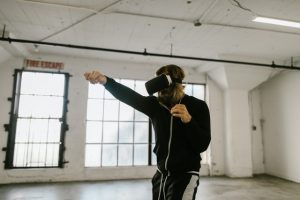Use of VR in Sports
We tend to think about our history in terms of great revolutions that happened in its duration, and which serve as checkpoints for our understanding of it. We also tend to think of the Industrial Revolution as one of the greatest events in history, which completely changed the course which mankind took. Yet, we do not give enough credit to the computer revolution that took over the world in a flash. In a matter of mere decades, we went from having complicated calculators to having machines that can access the total of all human knowledge, and in a matter of years, we became able to do it from practically any place, without any cables to plug. Moreover, we witnessed (and still witness) a migration from the real world to the online world, which takes place on the Internet, and which has become just as important as our real life, if not more important in some aspects. This mind-numbing change is made more and more unbelievable by technology such as VR and AR, which, more than anything, signal to us that we are living in the future.

What is VR?
VR, short for virtual reality, is the technology with which we are basically able to enter another world, which has little to do with our real surroundings. Usually, when VR is mentioned, we think of VR headsets, which enable us to enter the virtual surroundings regardless of the place we are in. AR, short for augmented reality, is a midway point between virtual reality and the real world; it combines some of the elements of VR with our surroundings and provides users with a more interactive way of looking at their surroundings. This is especially useful for tourists who visit big cities, as they can customize their tours without having to depend on a real-life tour guide, but rather visit locations based on their preferences. But how can these technologies be successfully employed in professional sports?

Use in sports
It may sound encouraging that some big sports clubs are already successfully using VR for training their players. This technology allows for the players to have a simulation of the game, and focus on the techniques and movement of particularly difficult opponents. Moreover, they can do this with the help of coaches and analysts, which can all join in and discuss the best tactics. Of course, this is not the only use for VR in sports. Sports fans will be delighted to know that they will soon be able to have a full 3D, VR experience of a sports hall, which they can access from the comfort of their own home. This can prove very helpful if, for some reason, you are unable to personally go to a game, but still wish to see and experience the environment and atmosphere in the building. Of course, VR can also be employed outside of sports halls, in developing good equipment, which is something that always needs innovation, for optimal results. Virtual reality allows for designs and products to be put through simulations that will show how the real product will fare during a game.



